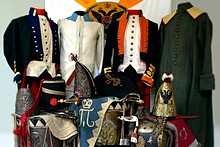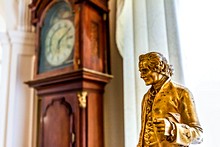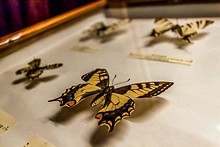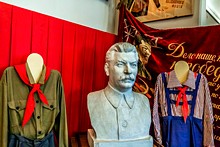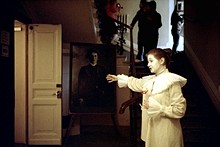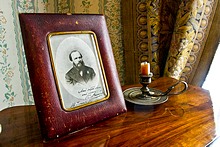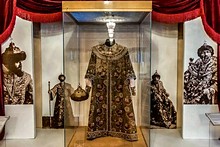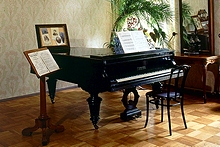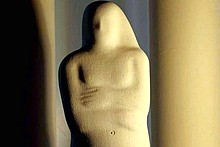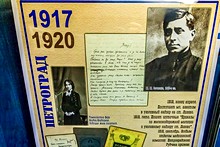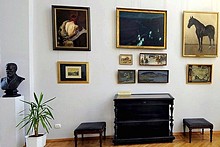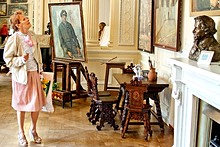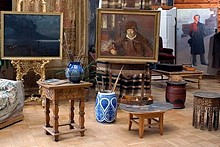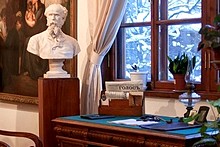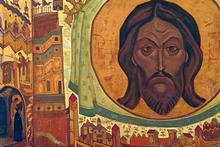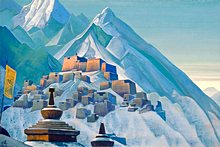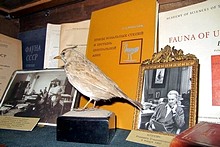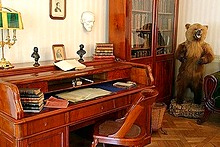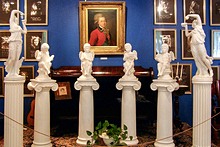Biographical Museums
It has long been a particularly popular custom in Russia to honour the great and good with museums in their former residences, and visitors to St. Petersburg will find several museums devoted to the city's most prominent citizens, including the great writers of Russian literature, revolutionary politicians, and other significant historical figures. Below is a pick of the most interesting for foreign visitors.
Housed in an extraordinarily ornate building in high Russian Revival style, this museum tells the life-story of Alexander Suvorov, considered one of the finest military commanders in history, who lead the Russian Army to some of its greatest victories in the late 18th century.
One of several memorial museums to Russia's greatest literary hero, St. Petersburg's Pushkin Apartment Museum occupies the apartment where the Romantic poet died from dueling wounds in 1837, and contains a vast number of his personal effects.
Occupying the first floor of the house where Nabokov was born and spent his child, this young but extremely active museum is a must-see for all of the great Russian-American writer's fans, and includes memorabilia that has been gathered from all over the world.
This museum on the Petrograd Side honours Revolutionary activist and local Party boss Sergei Kirov. A reconstruction of his apartment is complemented by several modern displays devoted to different aspects of life in Leningrad in the 1920s and 1930s.
A native of St. Petersburg, Alexander Blok was one of the leading lights of the Silver Age of Russian poetry at the turn of the 20th century. This apartment in the Kolomna district is where he spent the last eight years of his life.
This thriving little museum and cultural centre is located in Fyodor Dostoevsky's final apartment. It contains a restoration of the writer's lodgings, and also hosts a wide variety of concerts, theatre performances, and temporary exhibitions.
Part of the Museum of Musical and Theatrical Art, this house on the Petrograd Side was the last Russian home of the great operatic bass Feodor Chaliapin. The museum contains a collection of the singer's personal possessions and a wealth of memorabilia connected to his life and performances.
This museum and small concert hall on Zagorodny Prospekt celebrates the life and works of Nikolai Rimsky-Korsakov, one of the pioneers of Russian opera and a central figure in the cultural world of St. Petersburg in the late 19th century.
Anna Akhmatova is revered not only as one of the greatest Russian poets of the 20th century, but also as a chronicler of the greatest tragedies suffered by Leningrad and its citizens in the period. This museum in a garden wing of the Sheremetyev Palace celebrates her life and genius.
Housed in an apartment off the Griboedov Canal, this small museum celebrates the life and works of Mikhail Zoshenko, the comic author and satirist who, despite losing favour with the Soviet authorities, remained one of the best loved writers in Russia.
A highly influential artist famous for his striking depictions of light and sky in his landscapes, Kuindzhi spent the last 13 years of his life in this beautiful apartment on Vasilevskiy Island, which now houses an collection of his personal effects, and his and his students' art.
Housed in a beautiful Carlo Rossi building on Ploshchad Isskustv (Arts Square), this museum honours the realist painter Isaak Brodsky, the grandfather of Socialist Realism, whose conservative style was embraced by the Soviet authorities.
The naturalist painter Ilya Repin is one of Russia's best-loved artists. In the town named after him (Repino) on the Gulf of Finland, this beautifully preserved house and gardens contains several of his works and his personal effects.
Pavel Chistyakov was one of the leading artists of the Russian Realist school, and an influential teacher in St. Petersburg. His attractive wooden dacha in the town of Pushkin is maintained as a museum by the Russian Academy of Arts.
Located in a fine 18th century mansion on Vasilevskiy Island, this is an active cultural centre celebrating the lives and legacy of the mystic and painter Nicholas Roerich and his family, with a permanent collection of art and effects, and a busy calendar of events.
The internationally renowned mystic, orientalist and painter Nicholas Roerich is honored at this house-museum in the village of Izvara, a beautiful wooden dacha (and gardens) that contains a recreation of the artist's home and temporary exhibitions connected to his life and works.
Located in the Petersburg apartment of Pyotr Kozlov, the last of the great Russian explorers of Central Asia, this museum contains displays covering the series of late-19th century exhibitions to the region, as well as Buddhism in Tibet, and Kozlov's travelling effects.
The poet Nikolay Nekrasov was one of the leading figures of St. Petersburg literature in the 19th century, and his apartment on Liteyniy Prospekt played host to all the era's greatest writers, including Tolstoy, Turgenev and Dostoevsky.
A rather old-fashioned and even amateurish collection tracing the life and works of Akhmatova and her first husband, Nikolay Gumilev, was for many years the only institution in St. Petersburg honoring one of the 20th century's greatest literary figures.
Renowned for his experiments with dogs, Ivan Pavlov lived alongside several other prominent scientists in this house on Vasilevskiy Island. Pavlov's wife kept his rooms unaltered for 30 years after his death before they were turned into a museum.

